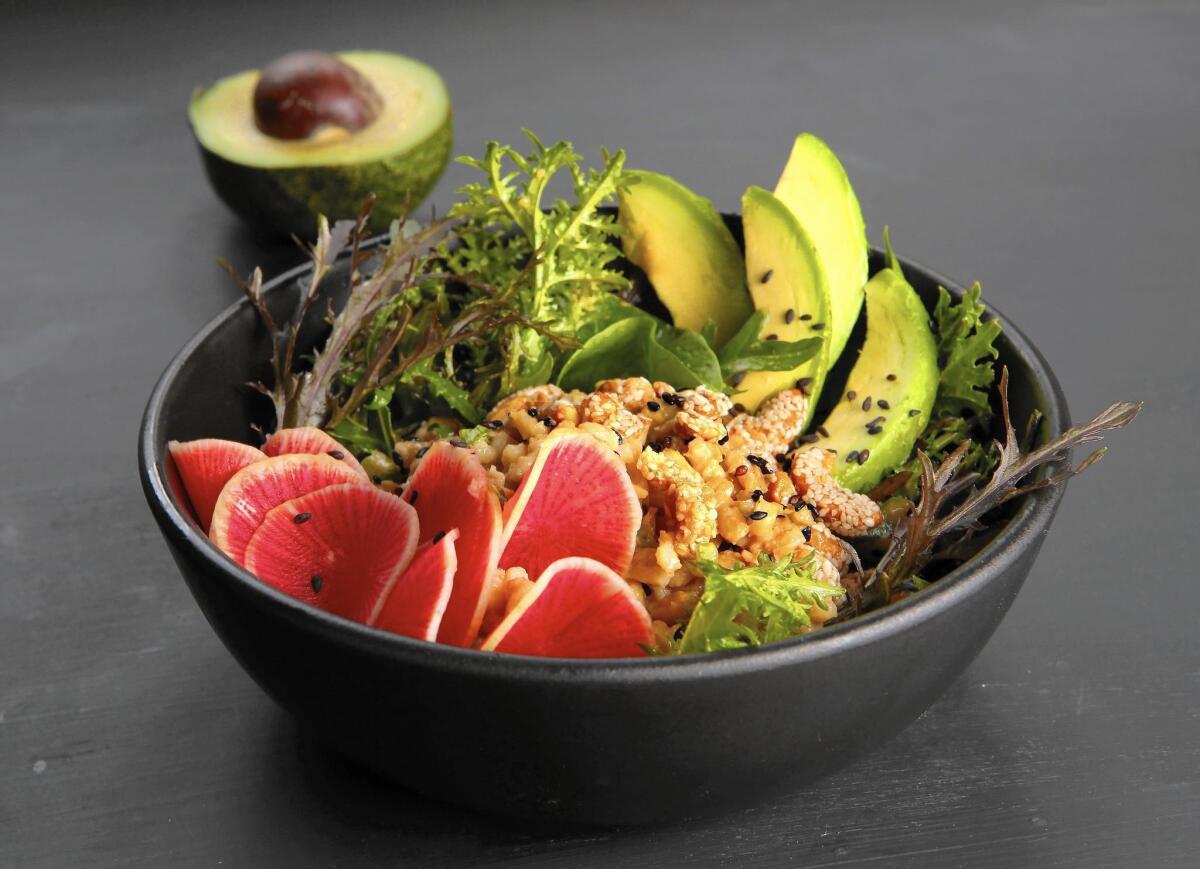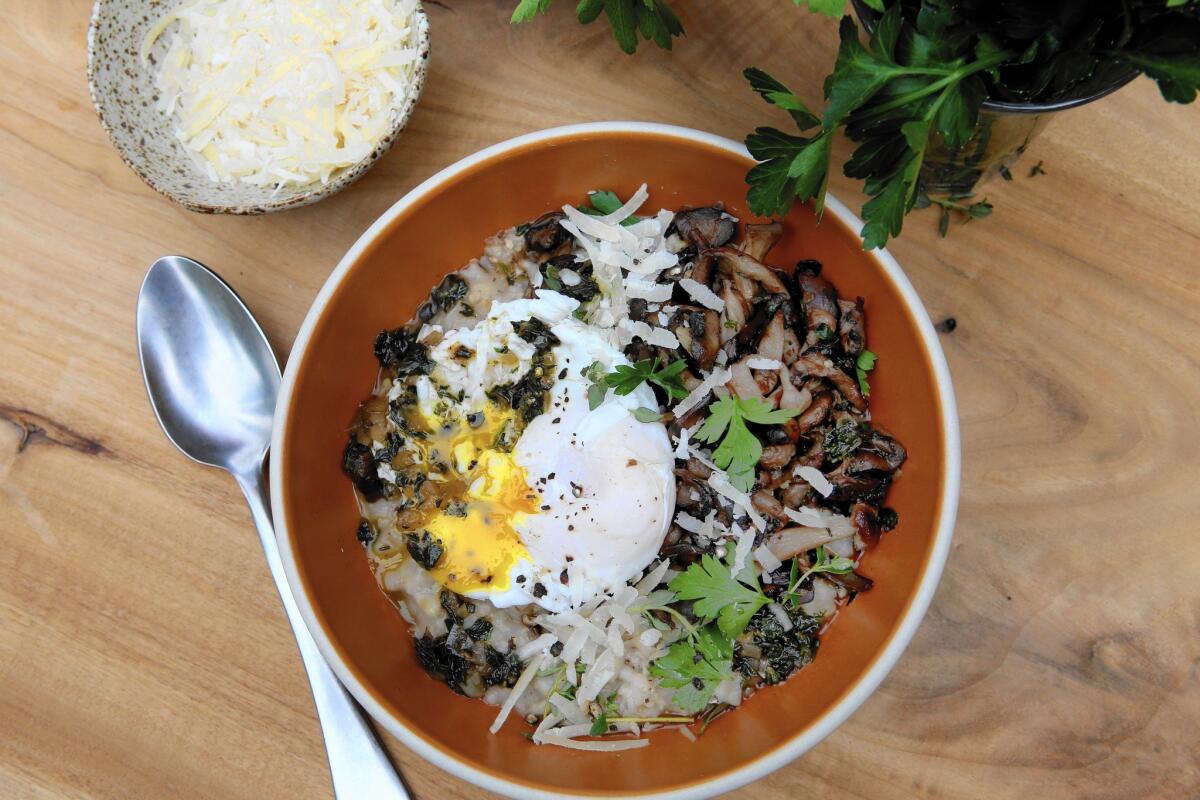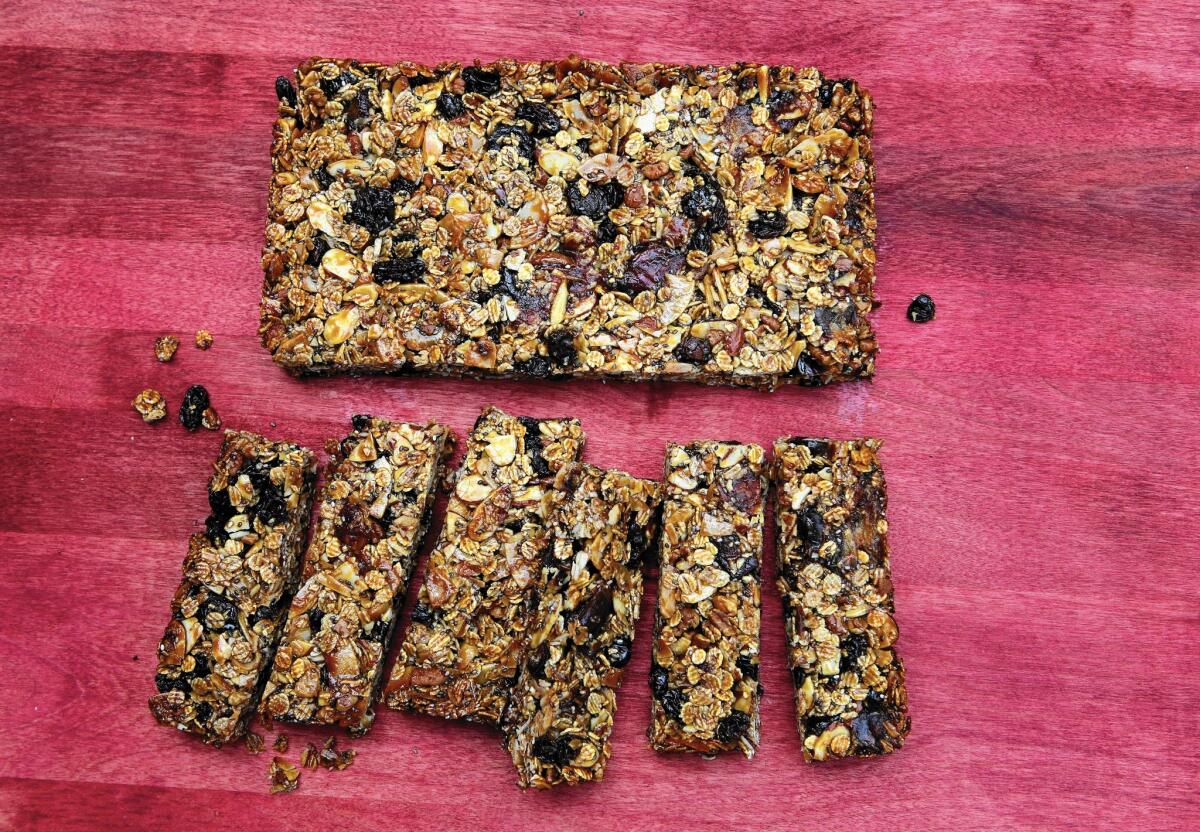Here’s how to elevate simple barley to a whole other taste level

Sesame barley bowl.
Barley is comfortably common. You can find it easily, often sold in generic packages, sitting next to the bags of split peas and navy beans on the lowest shelf at your unfancy neighborhood supermarket. Barley is familiar. It isn’t hipsterized or weird or exotic, adjectives too likely to be pinned to other grains, like quinoa, teff or freekeh. It may not have the cache of farro, its Italian relative. Rather, barley is more like your grandmother’s grain: comforting and nurturing, filling pots of long-simmered soups and stews.

Recipe: Barley porridge with mushrooms, herbs and poached egg
The oldest of all the cultivated cereals, grains of barley were buried with Egyptian mummies and used as a form of measurement in medieval England. It’s an adaptable grass that grows in climates as diverse as the Arctic Circle and Ethiopia, and that adaptability has made it a multicultural cereal — simmered into various gruels and stews and soups from Scotland to Eastern Europe to Persia. Barley is also, don’t forget, delicious. Because that’s a better adjective than “wholesome,” which it is too. Nutty in flavor and slightly chewy in texture, the grain can be cooked up into all sorts of cheery dishes.
Worldwide, most barley harvested for culinary use is pearled — the pearling process scrapes away the tough inedible hull of the grain, which also speeds up cooking. Even though the de-husking removes a good portion of the bran, it’s still very high in fiber. If whole grains are what you crave, search out hull-less barley, a variety that grows with a loose hull that can be husked without damaging any of the bran. (Hull-less barley can be used in place of pearled barley in most recipes.)
There’s also malted barley, which is germinated and dry-toasted in order to convert starches to sugar; an old tradition that’s beneficial to beer brewing. Get that same round, golden flavor from barley malt syrup. Available at health food stores, the syrup is dark and sweet but without the metallic qualities of molasses. Use it in a hearty take on granola bars that also feature rolled barley, a flake that looks a lot like old-fashioned oats. Like rolled oats, barley is steamed, rolled flat and dried. Consumable raw, rolled barley is crunchier.

Recipe: Toaste barley fruit and nut bars
As for what to do with that bag of pearled barley, maybe take a few tips from the Japanese, who have a long tradition of cultivating barley and using it in creative ways (including tea). After boiling the grains al dente as you would pasta, try mixing tender barley with cold sesame dressing and mounding it in a bowl with lots of fresh greens for another take on the current Things in a Bowl trend. Or follow grandma’s lead and make a porridge, another on-trend dish. This longer simmer of pearled barley and steel-cut oats creates a soothing porridge that can be topped with syrup and cream and a scatter of berries for a sweet start to the day. Or take that same hot cereal and top it with sautéed mushrooms, a poached egg (of course), grated Parmesan and a ladleful of herb broth and you’ve got an elevated yet comforting dish that’s perfect served at any hour.
SIGN UP for Jonathan Gold’s Counter Intelligence dining newsletter >>
There’s no denying the wonderfulness of dishes like beef and barley soup, but cooking up the grain in new, unexpected ways lets us rediscover the versatility, full flavor and simple pleasure of eating good ol’ barley.
Jeanne Kelley is a Los Angeles cook and cookbook author who also writes at www.jeannekelleykitchen.com
More to Read
Eat your way across L.A.
Get our weekly Tasting Notes newsletter for reviews, news and more.
You may occasionally receive promotional content from the Los Angeles Times.










